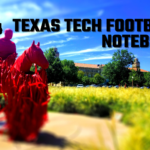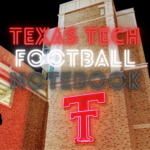Last Week’s Results
There weren’t many games during “Week 0”, but if you recall we had Hawaii identified as a high value pick against Arizona last weekend. Not only did Hawaii cover the spread, but they won outright, which means we cashed in on their +300 money line. Even better, since two different analytical models informed us to bet on Hawaii, we bet two units on the Hawaii ML leaving us up +600, or plus six units. If you bet with $100 units, that’s $600 in profit from the ML and $91 in profit from Hawaii covering the spread (ATS bets usually pay out -110, so $91 on a $100 bet).
So we are up a whopping $691 on just one college football game! This is where you take your money and walk away with no intention of ever gambling again. But since we’re degenerates and we have a full season of college football left, we press on…
- Last Week Against the Spread (ATS): 1-0 (+0.91 units)
- Last Week Money Line (ML): +6 units
- YTD ATS: 1-0 (+0.91 units)
- YTD ML: +6 units
Bad Beats
Last weekend’s Florida-Miami game was a disaster for over bettors. The total scored by both teams was 44 in a game where the over/under was 46.5. It was sloppy all around with penalties and turnovers everywhere. Miami missed a chip shot field goal that would have cashed the over, and both teams combined for multiple red zone turnovers. Brutal for over bettors.
Biggest Movers in Vegas
- UCLA and Cincinnati’s total opened at 54.5, and is up to 60
- Utah and BYU’s total opened at 57.5, and is down to 48
- Rutgers opened -11 vs. UMass and is up to -15.5
- Colorado and Colorado State’s total opened at 64.5, and is down to 58.5
- NC State opened -20.5 vs. ECU and is down to -16.5
- Boston College and Virginia Tech’s total opened at 52, and is now up to 57
- LSU and Georgia Southern’s total opened at 60, and is now down to 53
- USC opened -9.5 vs. Fresno State and is now -13.5
One betting tactic is to go against big line movements in Vegas. This strategy supposes that Vegas more or less had it right when the line opened, and when they move the line by 4-6 points (or more) one direction or the other, they are giving potential bettors some good value. Vegas moves lines like this when they have a lot of liability one way or the other.
So take UCLA and Cincinnati’s point total for example. Vegas thought the total would be around 54.5 and set the line accordingly. The betting public placed enough bets on the over that Vegas had to adjust by increasing the over 5.5 points to 60. That may not sound like a whole lot, but in gambling it certainly is. As a result, Vegas is hoping the total stays under since so many of the bets are on the over. And since Vegas is usually pretty smart and not in the business of losing money, betting against big line movements puts the bettor in the same corner as Vegas in a sense.
I will track how one would do each week if they were to bet against big line movements all season. These won’t factor into the picks we identify using analytics each week, it’s just an additional thing to track for fun.
From The Hip
Each week, I’ll shoot from the hip on a couple picks. These won’t be based on analytics and won’t factor into my weekly and season totals either, but I will track how I do on these as an aside. This will likely prove why you should rely on analytically-informed picks instead of just guessing. I’ll try to keep these limited to high profile games or otherwise interesting ones like Big 12 matchups.
- Oregon +3.5 vs. Auburn
- Utah -5.5 vs. BYU
- Oklahoma and Houston UNDER 83
- Georgia -21 vs. Vanderbilt
- Texas -20.5 vs. Louisiana Tech
- Arkansas State -2.5 vs. SMU
Week 1 Gambling Picks
And now, what you’ve all been waiting for. Here are the high value picks according to the analytical models for Week 1 (some of these were hard to stomach since I feel so strongly against them):
- Wake Forest -170 vs. Utah State
- Coastal Carolina +210 vs. Eastern Michigan, 2u
- Ole Miss +180 vs. Memphis
- UCLA +115 vs. Cincinnati, 2u
- Nevada +325 vs. Purdue, 2u
- Oregon State +500 vs. Oklahoma State
- USF +400 vs. Wisconsin, 2u
- UMass +500 vs. Rutgers
- Louisville +800 vs. Notre Dame
- Toledo +350 vs. Kentucky
- Akron +600 vs. Illinois
- Colorado State +400 vs. Colorado
- North Carolina +275 vs. South Carolina
- Boise +180 vs. Florida State
- Louisiana Tech +850 vs. Texas
- Liberty +700 vs. Syracuse
- Wyoming +650 vs. Missouri
- FIU +105 vs. Tulane
- Houston +1000 vs. Oklahoma
If there’s a “2u” next to a pick, that means two models (ESPN’s FPI and Adam McClintock) agreed it was a high value pick so I am (fake) betting two units instead of one on that game. All lines are using the Vegas Insider consensus as of Monday evening. Had I gotten some of these lines earlier, we’d have more potential value (i.e. UCLA opened at +160, which would have been tremendous value considering they’re a good value pick even at +115). On the other hand, lines like Coastal Carolina have trended in our favor, as they opened at +180 and now sit at +210.
I count 23 units being wagered on 19 total games this week, all money line bets (more on that below). Out of the 42 FBS-on-FBS matchups, this seems very high. I don’t anticipate there will be this many high value games every week. That’s a lot of risk. (And that’s before I pair each game for every combination of two-game parlays one can create from the list above, which will amount to an insane number of units being wagered. I’ll have to calculate all that later on.)
One other note for the sake of transparency: Adam McClintock’s model has predicted pretty strong variations from the points spreads in Vegas this week. I am going to track how these do for a few weeks before determining the threshold for including those picks in this piece every week. I have a particular threshold established for money line bets (a 7 percent variation from the break even percentage, which you can read about here). But I need to figure out how to determine bets against the spread using McClintock’s model since I didn’t track it last year and it is the only model currently making predictions against the spread. I will follow up on this, but if we bet on those games there would be even more units being wagered this week. Scary thought for the faint of heart.
If y’all have any questions about any of this, let me know. As y’all start to learn what I’m doing each week, these posts will be more concise. I apologize for the length on these so far and I promise more brevity going forward.









